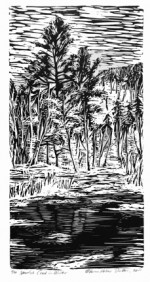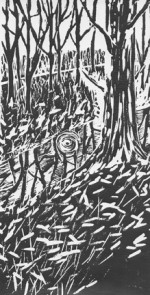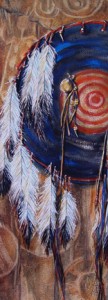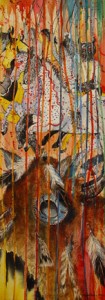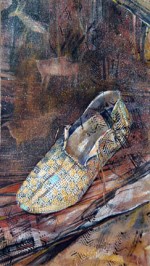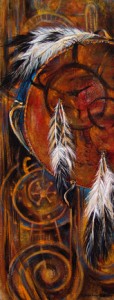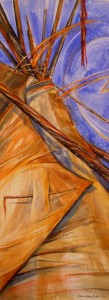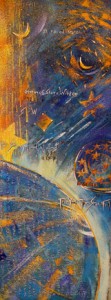 This painting was created specifically for a local micro brewery, Crow Peak Brewery. They have been open a very short time, yet are going like “gang busters”. I hang my artwork there, and had long envisioned this piece to hang next to the lovely stone fireplace there. Many local musicians perform here, and it is a popular gathering spot. The product they make is amazing and varied: they often have new lagers, ale and beer, and with a name like Crow Peak Brewery, you can count on great names for these brews!
This painting was created specifically for a local micro brewery, Crow Peak Brewery. They have been open a very short time, yet are going like “gang busters”. I hang my artwork there, and had long envisioned this piece to hang next to the lovely stone fireplace there. Many local musicians perform here, and it is a popular gathering spot. The product they make is amazing and varied: they often have new lagers, ale and beer, and with a name like Crow Peak Brewery, you can count on great names for these brews!
“Homage to Crow Peak” is the name of the painting. It is an Acrylic on Canvas, hung like a scroll and measures a sizable 5’ x 7’.
The Native American tribe known as the Crow Indians call themselves “Apsa‘ alooke”, translated into “children of the large beaked bird”, miss-translated to “Crow People” by early Frenchmen. Now, the tribe is known largely as Crow.
Outside of Spearfish, SD is a mountain named Crow Peak. The mountain’s name derives from a battle between the Crow and the Sioux American Indian tribes. According to legend, the Sioux won this great battle. This painting depicts this legend of the mountain. Included is a phoenix-like black crow, rising up after the battle.
The Native American tribe known as the Crow Indians call themselves “Apsa‘ alooke”, translated into “children of the large beaked bird”, miss-translated to “Crow People” by early Frenchmen. Now, the tribe is known largely as Crow.
Outside of Spearfish, SD is a mountain named Crow Peak. The mountain’s name derives from a battle between the Crow and the Sioux American Indian tribes. According to legend, the Sioux won this great battle. This painting depicts this legend of the mountain. Included is a phoenix-like black crow, rising up after the battle.
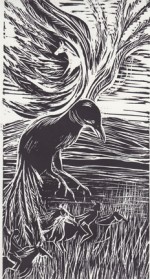 I did a series of works, including the banner I recently blogged about, which deal with the local legend of how our area landmark, Crow Peak, got it’s name. This is a block print, rendered from a painting that I especially love.
I did a series of works, including the banner I recently blogged about, which deal with the local legend of how our area landmark, Crow Peak, got it’s name. This is a block print, rendered from a painting that I especially love.